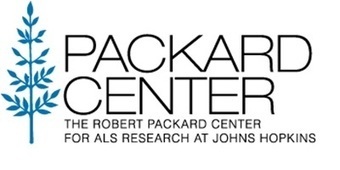Via Scoop.it – ALS Lou Gehrig’s Disease
 Researchers first associated mutations in the SOD1 gene with familial ALS in 1993, one of the first times that a specific gene had been associated with the illness. Further studies showed that the SOD1 protein doesn’t work properly even in sporadic ALS patients without a known mutation in the gene, although scientists weren’t sure exactly what was causing this protein to malfunction. A new study published today in the Proceedings of the National Academy of Sciences by Packard Center Science Director Piera Pasinelli showed that SOD1 is over-oxidized and doesn’t fold properly in lymphoblasts of sporadic ALS patients with bulbar onset. This over-oxidized SOD1 acquires toxic properties similar to those seen in mutant SOD1, linking mechanisms of toxicity between a subset of sporadic and familial patients respectively. “So far, this is the first time that it is shown that wild-type SOD1 is modified by oxidation in ALS using patients’ cells. This shows a specific mechanism of toxicity of an aberrant wild-type SOD1 in sALS- a mechanism that has been teased out for mutant SOD1 and allows for the design of target-based therapies that have the potential to go beyond the limited numbers of familial SOD1 patients,” Pasinelli said. “We used peripheral blood cells, in which the presence of an over-oxidized SOD1 has the potential to become a biomarker to classify different populations of sALS patients.
Researchers first associated mutations in the SOD1 gene with familial ALS in 1993, one of the first times that a specific gene had been associated with the illness. Further studies showed that the SOD1 protein doesn’t work properly even in sporadic ALS patients without a known mutation in the gene, although scientists weren’t sure exactly what was causing this protein to malfunction. A new study published today in the Proceedings of the National Academy of Sciences by Packard Center Science Director Piera Pasinelli showed that SOD1 is over-oxidized and doesn’t fold properly in lymphoblasts of sporadic ALS patients with bulbar onset. This over-oxidized SOD1 acquires toxic properties similar to those seen in mutant SOD1, linking mechanisms of toxicity between a subset of sporadic and familial patients respectively. “So far, this is the first time that it is shown that wild-type SOD1 is modified by oxidation in ALS using patients’ cells. This shows a specific mechanism of toxicity of an aberrant wild-type SOD1 in sALS- a mechanism that has been teased out for mutant SOD1 and allows for the design of target-based therapies that have the potential to go beyond the limited numbers of familial SOD1 patients,” Pasinelli said. “We used peripheral blood cells, in which the presence of an over-oxidized SOD1 has the potential to become a biomarker to classify different populations of sALS patients.
Via www.alscenter.org

